Loading component...
At a glance
By Jez Spinks
Today’s company car parks gleam with sports cars and luxury SUVs – but the mid-sized luxury sedan remains the vehicle of choice for those wanting to combine athleticism, comfort and rear doors. It would be a strange executive world indeed without famous nameplates such as the BMW 5 Series.
This year, Mercedes-Benz is taking on the field with its new E-class, and Jaguar is in the first full year with its revised XF. They join respected competitors from Audi, BMW and Lexus, as well as the radical all-electric Tesla Model S which has turned the class – and the industry – on its head.
Jaguar XF
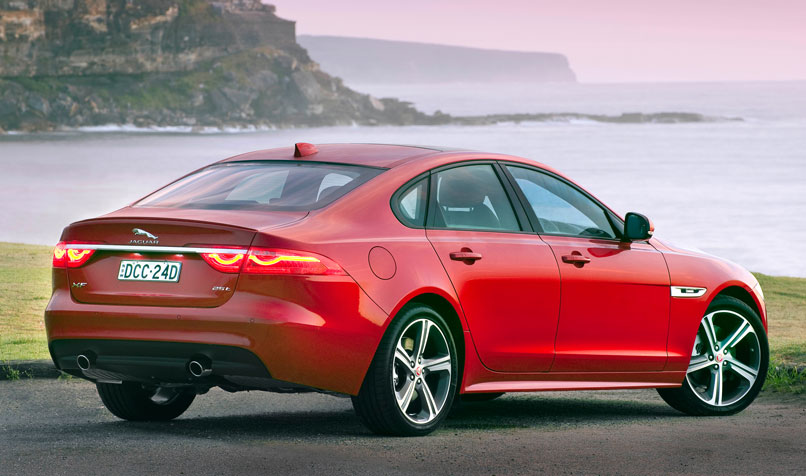
The contemporary looks of 2008’s XF rescued Jaguar from its miserable years of recycled design heritage. Generation 2.0 evolves the new look, while keeping trademark XF flourishes such as the rotary transmission dial and air vents that move into position at engine start-up.
Theatre aside, the XF aims to serve the driver. It displaces the BMW 5 Series for best-in-class steering. The ride is firm, but the well-controlled adaptive damping on our car maintained comfort.
A new aluminium-intensive structure shaves a massive 190kg from the old car’s kerb weight. It helps the XF accelerate, brake and turn, and also boosts fuel efficiency, especially if you choose one of Jaguar’s new four-cylinder engines.
The fastest performance comes from the A$140,690 S, with its 280kW supercharged V6 delivering 0-100km/h acceleration in 5.3 seconds.At the other end of the price scale, the 20d at A$92,000 is the most economical XF, officially consuming 4.3 litres per 100km.
While inside the XF’s cabin looks smart and features Jaguar’s simple-to-use InControl Touch infotainment system, Jaguar still has some work to do to improve its placings in the annual J.D. Power quality surveys.
Will appeal to: Buyers seeking the sportiest-driving large luxury car and a convincing alternative to traditional German offerings.
BMW 5 SERIES
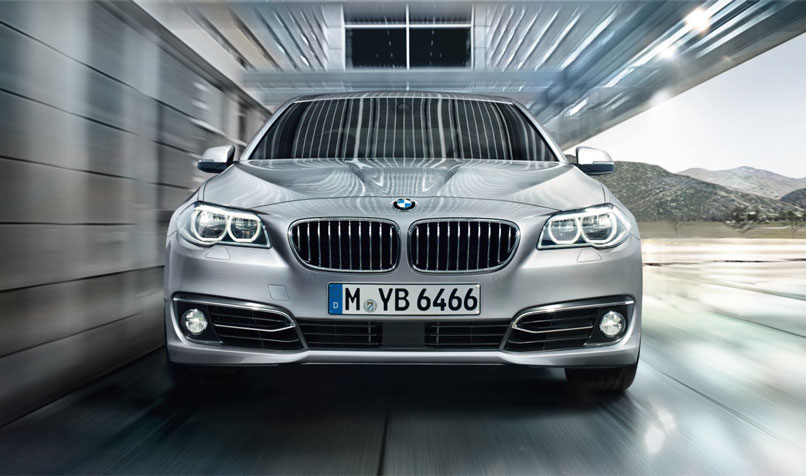
The current version of BMW’s large executive car may have arrived in 2010 and will be replaced in 2017, but the sixth-generation 5 Series neither looks nor feels past its use-by date. BMW’s four- and six-cylinder turbo engines remain brilliant, with responsive performance and benchmark fuel economy.
The range starts at about A$90,850, although the A$127,995 535i petrol and A$134,300 535d diesel models are particularly notable for matching their power with fuel-sipping frugality. BMW’s once-derided iDrive now stands out among all the infotainment systems.
The 5 Series has long been the pick for executives who love to drive. While no longer the outright handling leader, it’s still one of the best, turning eagerly into corners and gripping them on the way through. That handling is aided by the optional M Suspension, which stiffens the ride but never makes the 5 Series uncomfortable.
The longest wheelbase in its class ensures the BMW offers plenty of cabin space, and the headroom is helped by one of the taller rooflines here. The boot, too, is large.
The feel of the materials in the cabin may not match the Audi or Mercedes, but BMW’s once-derided iDrive now stands out among all the infotainment systems, with its intuitive operation.
Will appeal to: Executives who appreciate masterful engine building and smart technology.
LEXUS GS
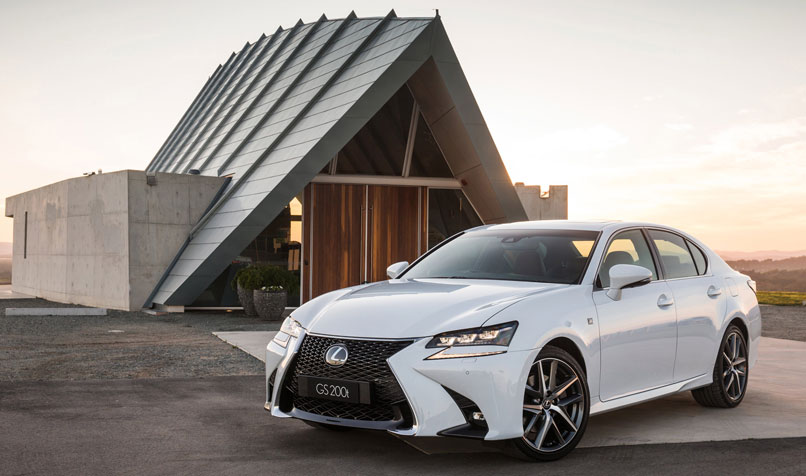
Now into its third decade and fourth generation, the Lexus GS remains a left-field choice in its luxury car segment.
That’s partly due to Lexus’s insistence on ignoring popular diesel options for hybrid power. Not even the lower-powered petrol-electric GS300h (priced from about A$88,875) can match some of its rival diesels for thrifty fuel consumption. Lexus can claim the cleanest emissions, however, and the GS450h (from A$117,000) still beats the newer BMW 5 Series Hybrid (6.3 litres per 100km versus 6.8).
The hybrid experience isn’t perfect: the regenerative braking system causes the brake pedal to be grabby, and the battery pack compromises the boot space in the vehicle.
Good petrol options in the Lexus come in the form of the old-school V6 (GS350) and new-age four-cylinder turbo petrol (GS200t).
On the road, the GS is refined but biased towards comfort. F-Sport variants lift the driving excitement just a notch with stiffer suspension and sharper steering.
Inside, the dash design and controls show the GS as a Lexus rather than a pricey Toyota. The main let-down is the fiddly Remote Touch menu control system.
Lexus remains the brand that buyers can most rely on. It continues to top J.D. Power’s dependability surveys, only Tesla matches its four-year warranty, and its customer service is regarded as the industry benchmark.
Will appeal to: Buyers looking for a luxury experience that extends beyond the vehicle.
AUDI A6
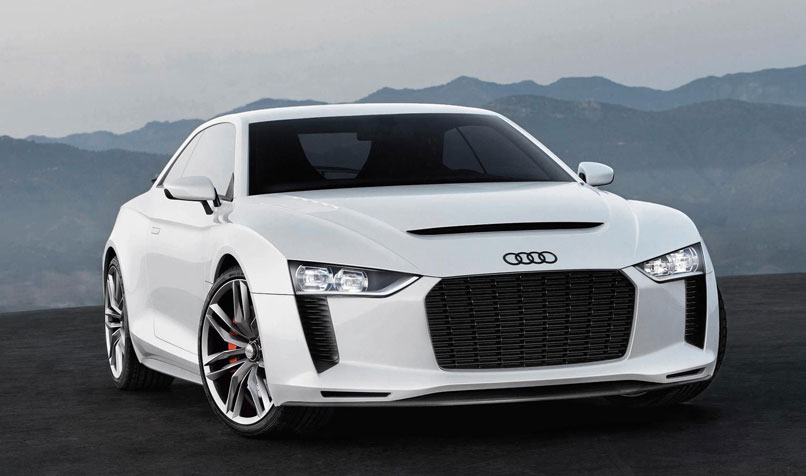
It wouldn’t be a surprise to one day find an Audi featured among the glossy spreads of magazines such as World of Interiors or Wallpaper*. The German brand leads in sophisticated cabin design, encouraging occupants to interact with its textured surfaces and brilliantly damped controls. A 2015 styling update has helped ensure the A6 doesn’t look five years old inside.
The A6 is less involving when it comes to driving controls, with steering that’s rather aloof. The suspension does better at providing a comfortable ride, and the A6 is the only member of the traditional large-car set to offer drivers the grip of all-wheel drive. A 2015 styling update has helped ensure the A6 doesn’t look five years old inside.
An entry-level 1.8 TFSI model costing from about A$89,850 powers only the front wheels and doesn’t feel undernourished in the performance department, but more satisfying progress comes from single- or double-turbocharger diesels.
The A$112,000 3.0 TDI is the most fuel-efficient A6, officially using 5.1 litres of diesel per 100km, although the A$136,300 Biturbo version brings surging performance – and an acceleration time of 0-100km/h in 5.0 seconds.
Will appeal to: Buyers who appreciate advanced interior design or (on most models) the all-weather security of all-wheel drive.
MERCEDES-BENZ E-CLASS
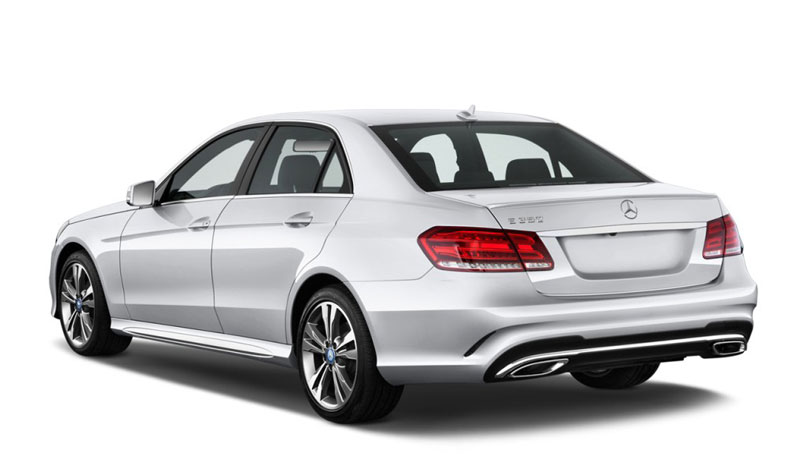
The new Mercedes-Benz E-Class claims to debut 10 world-first technologies. Its active systems can, for example, keep the car straight during a crosswind or, following an evasive manoeuvre, slow the car to a stop if it detects the driver is unconscious.
There’s also an evolution of Steering Pilot, which enables partial hands-free driving. When you grip the wheel, however, the Mercedes doesn’t connect you to the road surface like a BMW 5 Series or Jaguar XF does.
Under the bonnet, the best news is Mercedes has built a brand new 2.0-litre four-cylinder turbodiesel for the A$101,600 E220d, which provides easy progress with notably less noise than the 2.1-litre it replaces. The four-cylinder petrol turbo of the A$98,500 entry-level E200 is even more enjoyable to rev, and upcoming E300 and E350d models will deliver yet more punch.
A new nine-speed auto may be overkill in countries with well-enforced speed limits, but the car shuffles all those gears smoothly and quickly.
Will appeal to: Buyers who appreciate showcase technology wrapped in an inconspicuous and comfortable package.
TESLA MODEL S
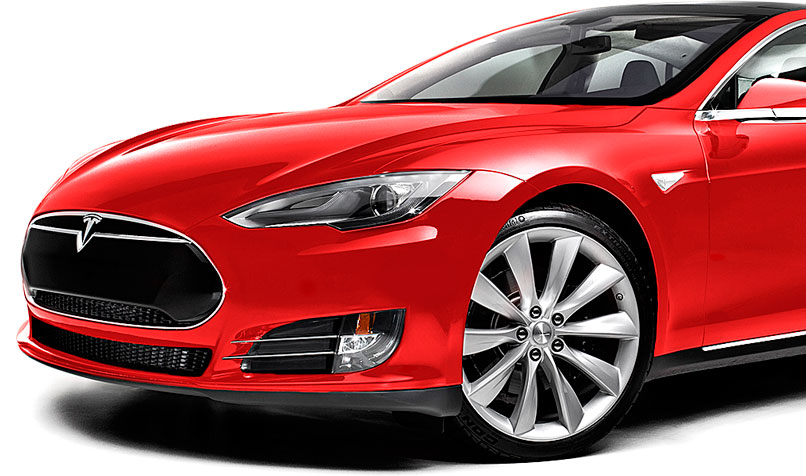
The top-line Tesla P90 D is hugely expensive at A$202,800, but the face-distorting acceleration of its optional extra “ludicrous mode” matches supercars costing double and triple its price. Electric motors can apply full rotational power to the wheels in an instant, making a Tesla’s normal progress utterly effortless.
Steering is silky. Sitting flat and low in the car, the huge battery pack helps weight distribution and keeps the car flatter in corners. And everything happens in virtual silence. If the ride from the air suspension wasn’t so lumpy, you could genuinely call the Model S a car that glides.The acceleration of Tesla’s ‘ludicrous mode’ matches supercars costing double and triple its price.
The Tesla can be progressively updated over the SIM-card-based wi-fi; one such update last year delivered semi-autonomous driving to variants with the right sensor array. A vast, vertical 17-inch touchscreen dominates the otherwise minimalist dash, housing the majority of vehicle controls and a simple navigation system using Google Maps.
Tesla estimates a full recharge at home will cost between A$8 and A$15, which theoretically makes the Model S cheaper to run than even the thriftiest diesel. Quicker charging options cost a few thousand dollars to set up. The company continues to expand its Supercharger network to let Tesla owners travel longer distances.
Will appeal to: Technophiles and drivers after a distinctive car with stunning performance.Resale values
The Tesla will hold its value the best after three years, says the industry-standard Glass’s Guide, which predicts a Model S bought now will be worth 54 to 55 per cent of its original price in 2019.
Jaguar’s XF and the latest Mercedes E-Class are too new for the latest resale forecasts, but the previous XF held a consistent 47 per cent across the range.
BMW 5 Series resale values vary according to the engine (47 to 52 per cent), while all Audi A6 models are forecast to resell at 52 per cent. The Lexus GS loses the most, reselling at 46 per cent of its original price.
Driving with the touch of a robot
The driverless car has never been closer. The Tesla Autopilot and Mercedes Drive Pilot use a mix of cameras, radar, ultrasonic sensors and maps to steer the vehicle along a lane, change lanes when you flick the indicator and maintain gaps in traffic at variable speeds.
The E-Class does best at staying centred in its lane; the Model S does better at telling you what’s happening. Both systems work best on freeways.
Tesla’s Autopilot will run for some minutes without the driver’s touch; the Mercedes Drive Pilot, previously limited to 30 seconds, now runs unaided for up to several kilometres. Ignore the warnings after that, and both cars will slow to a standstill. However neither system has yet replaced the driver.

